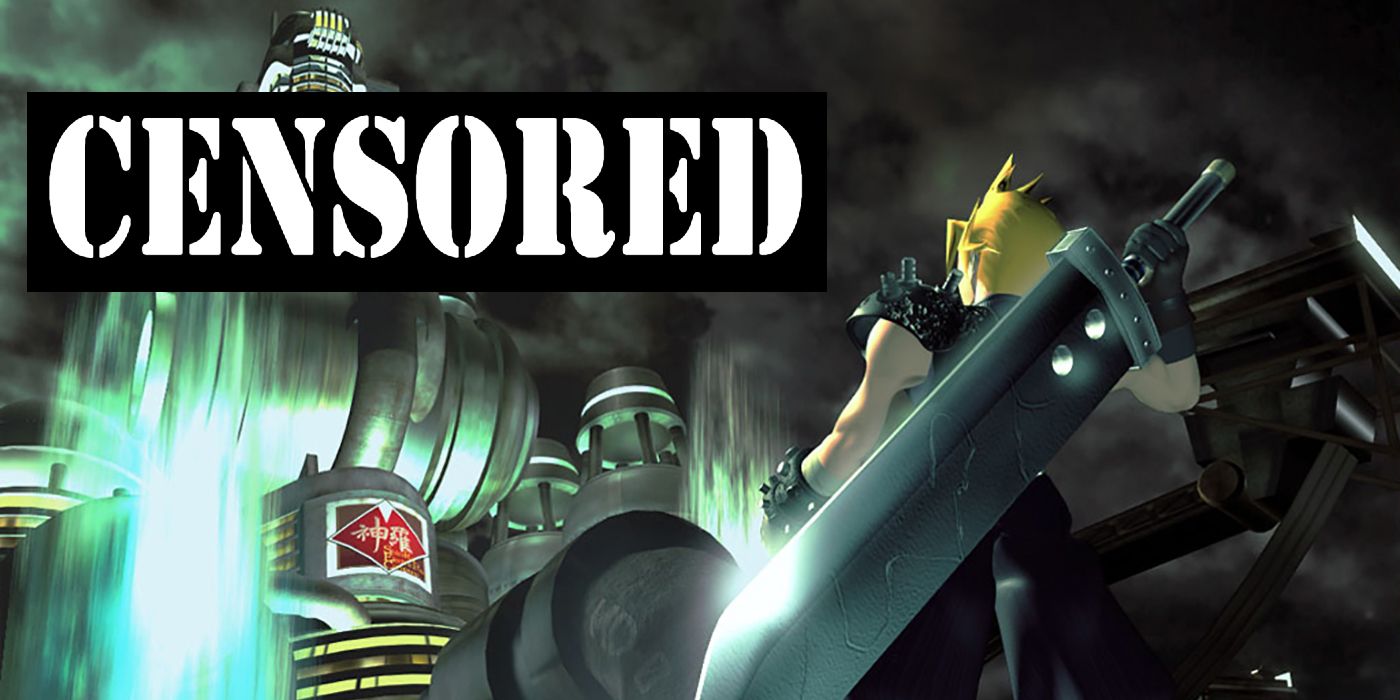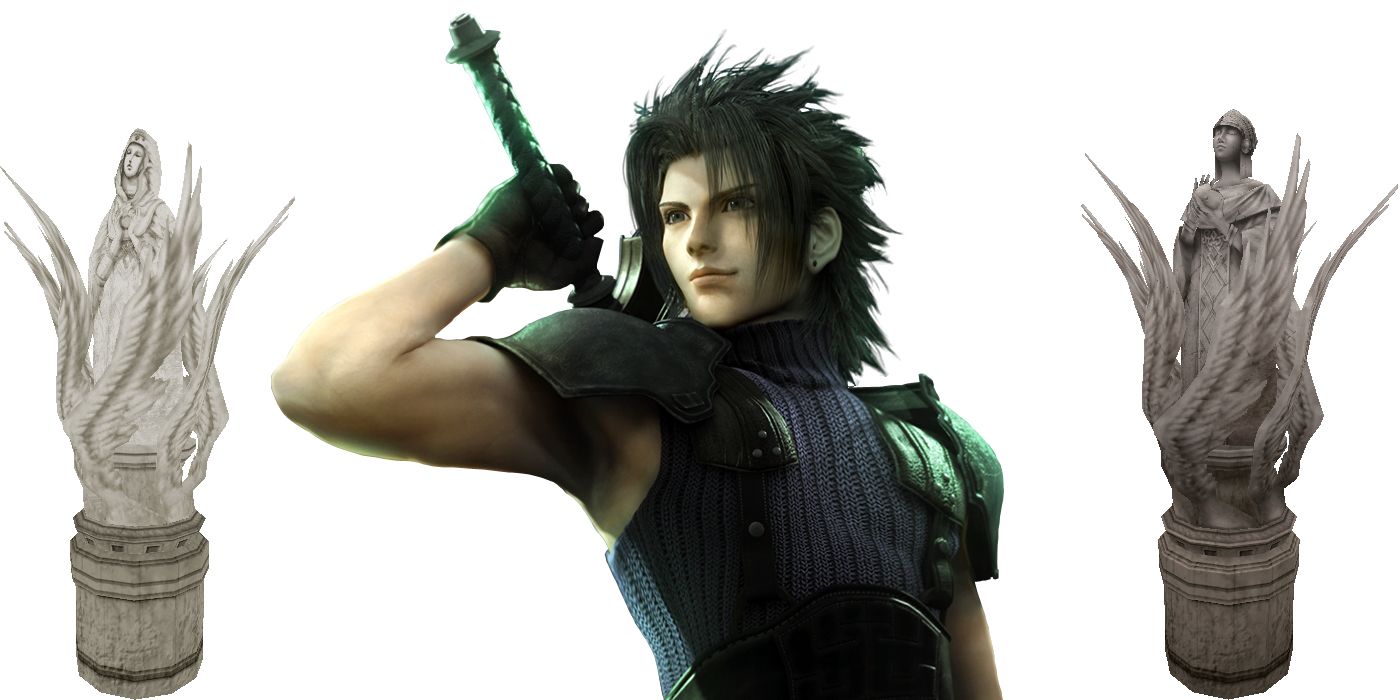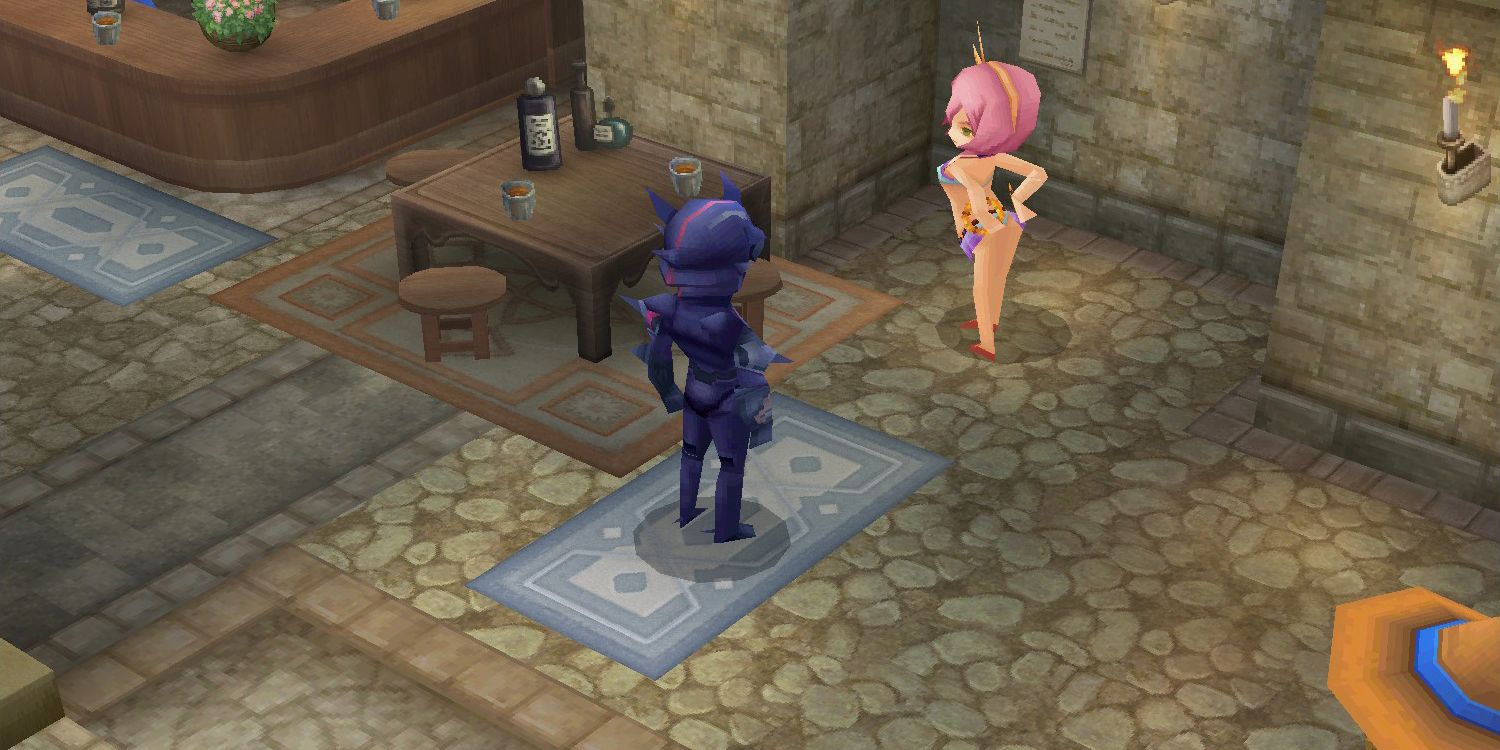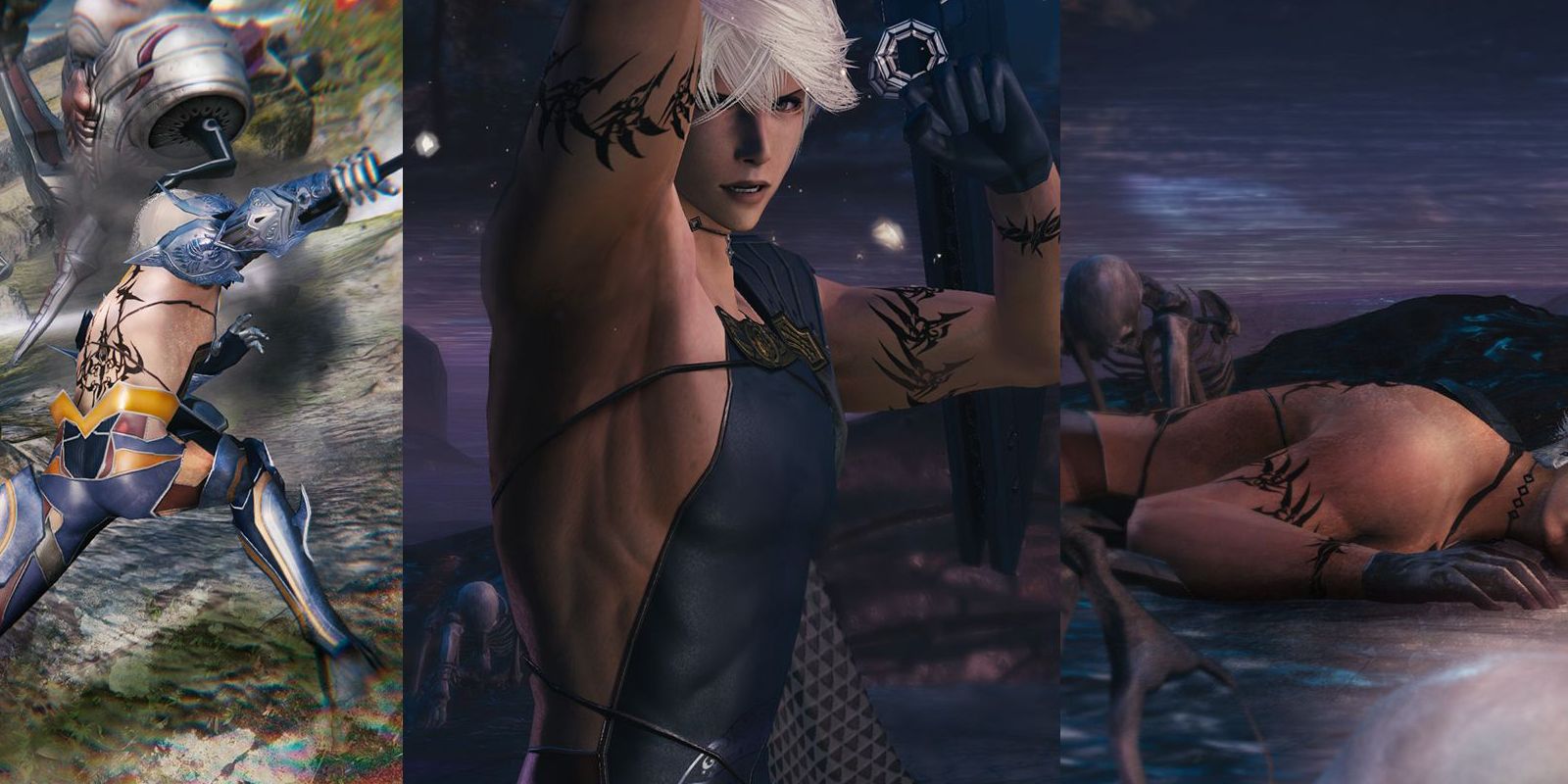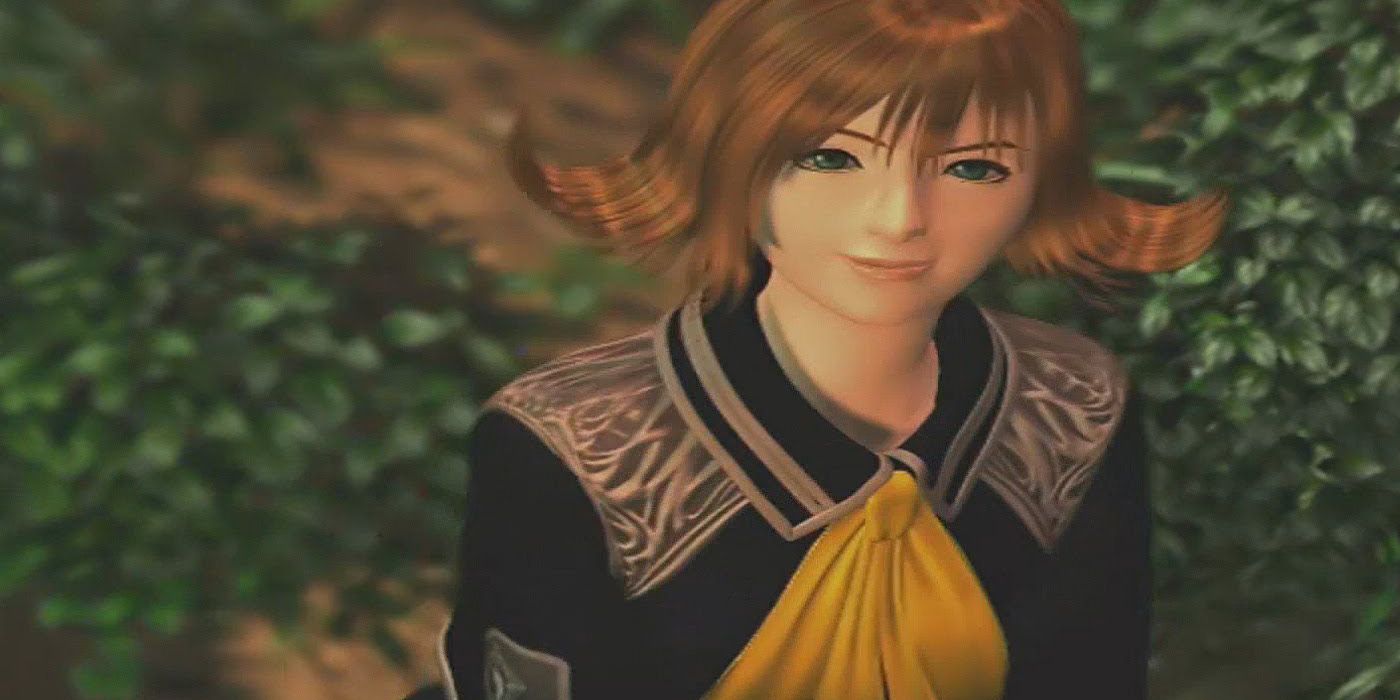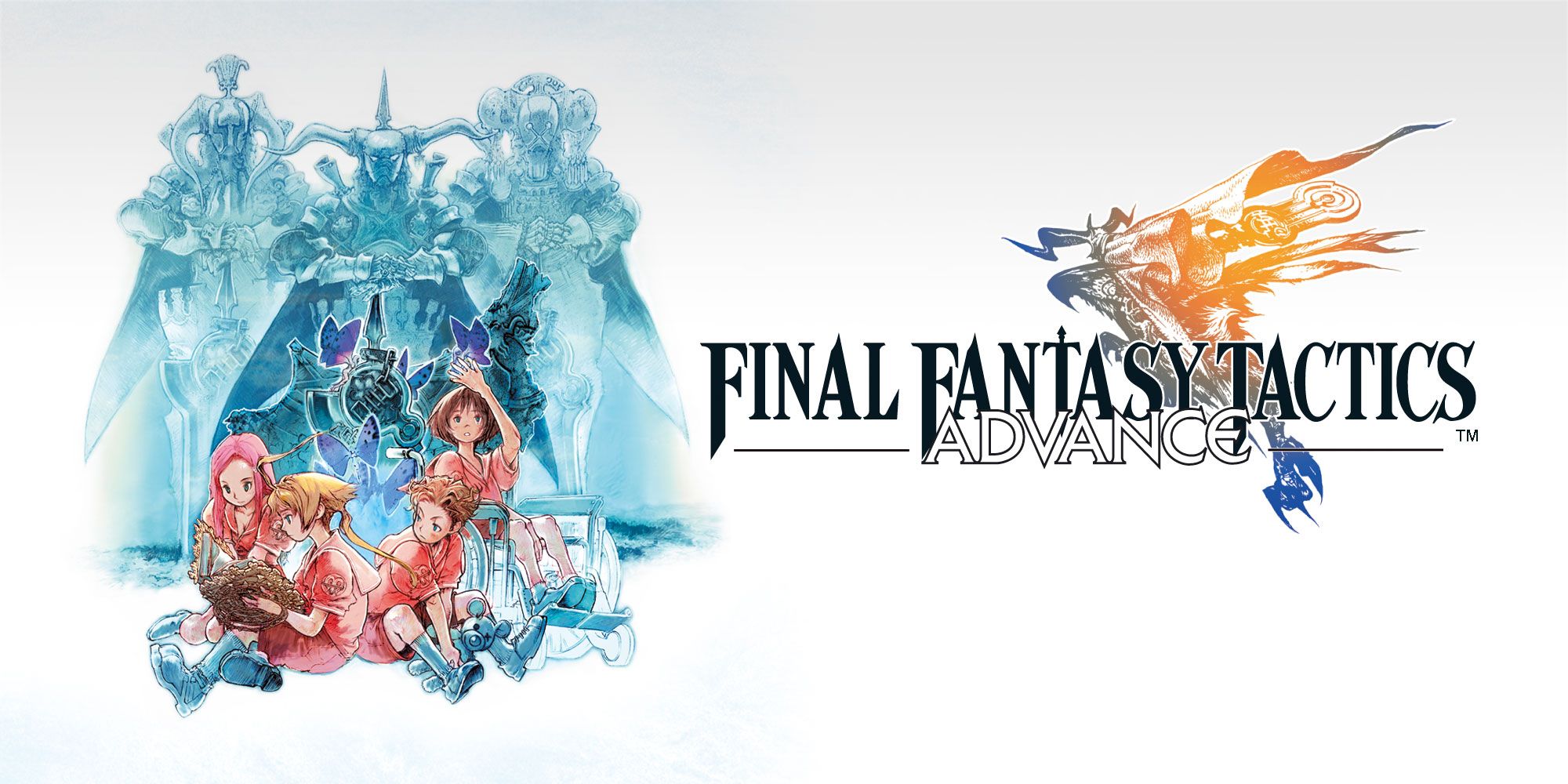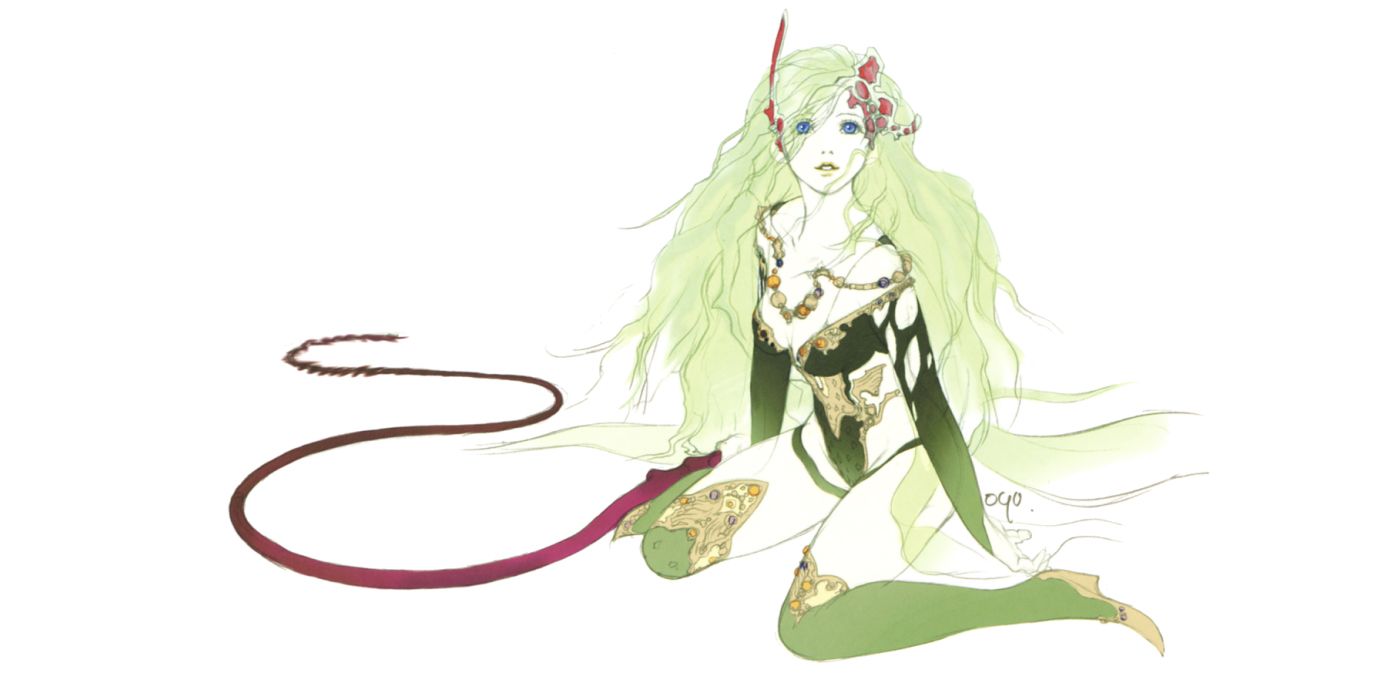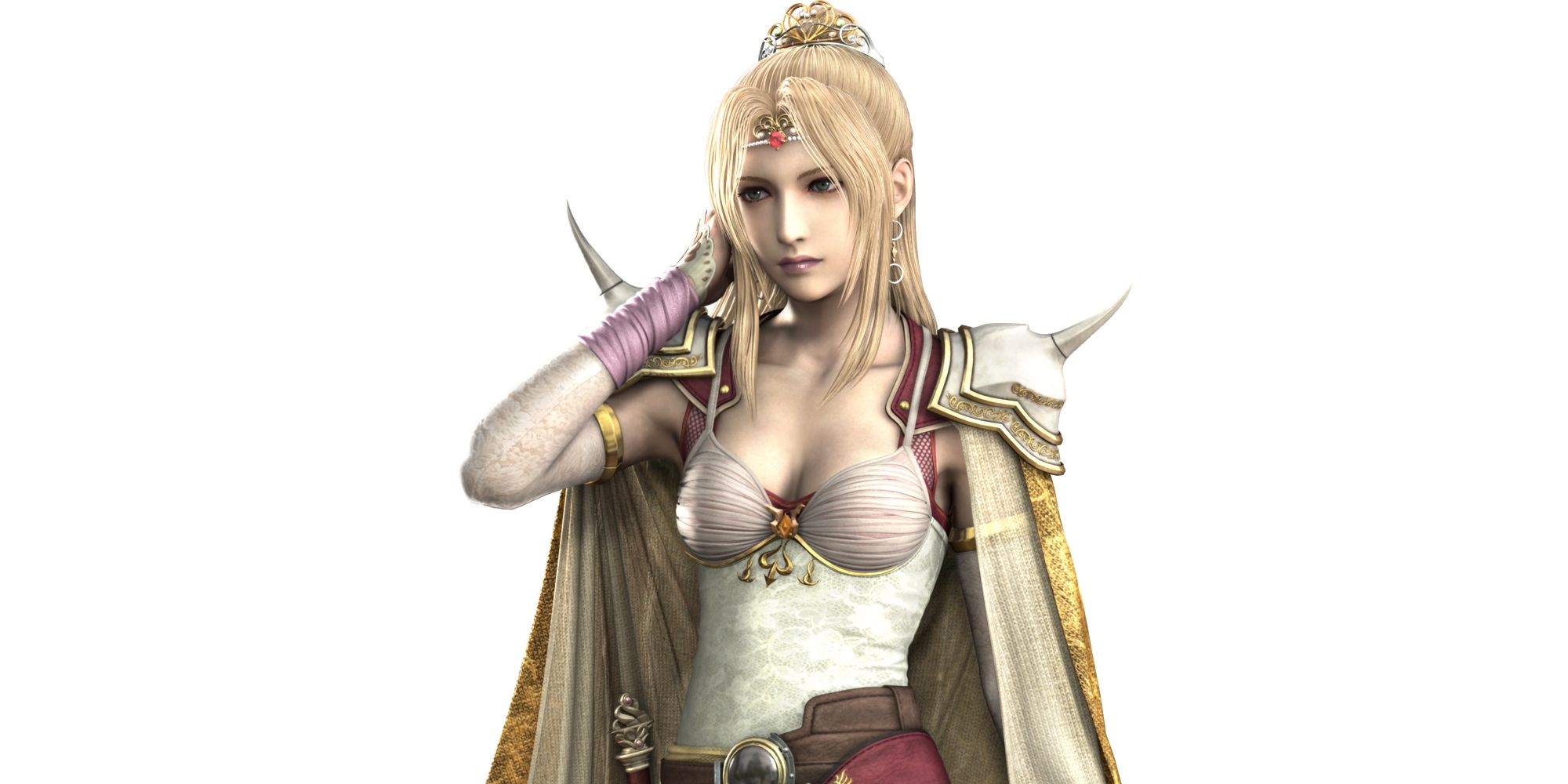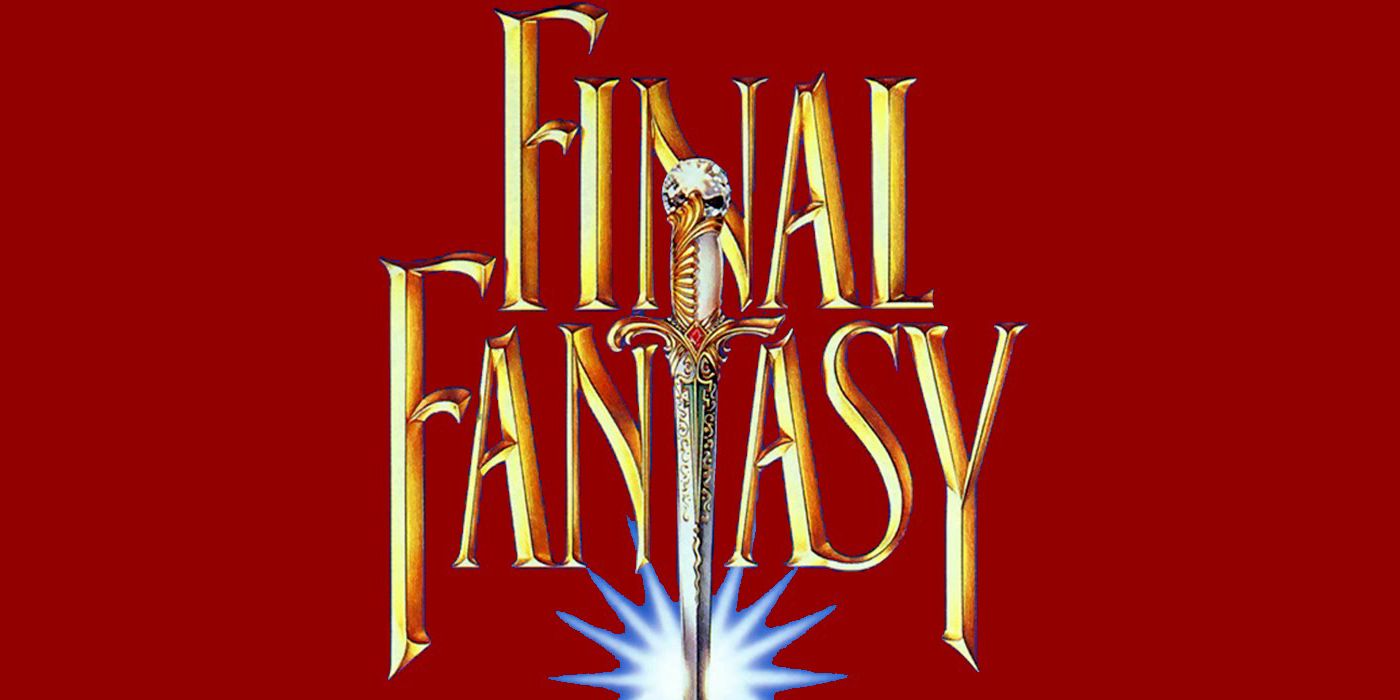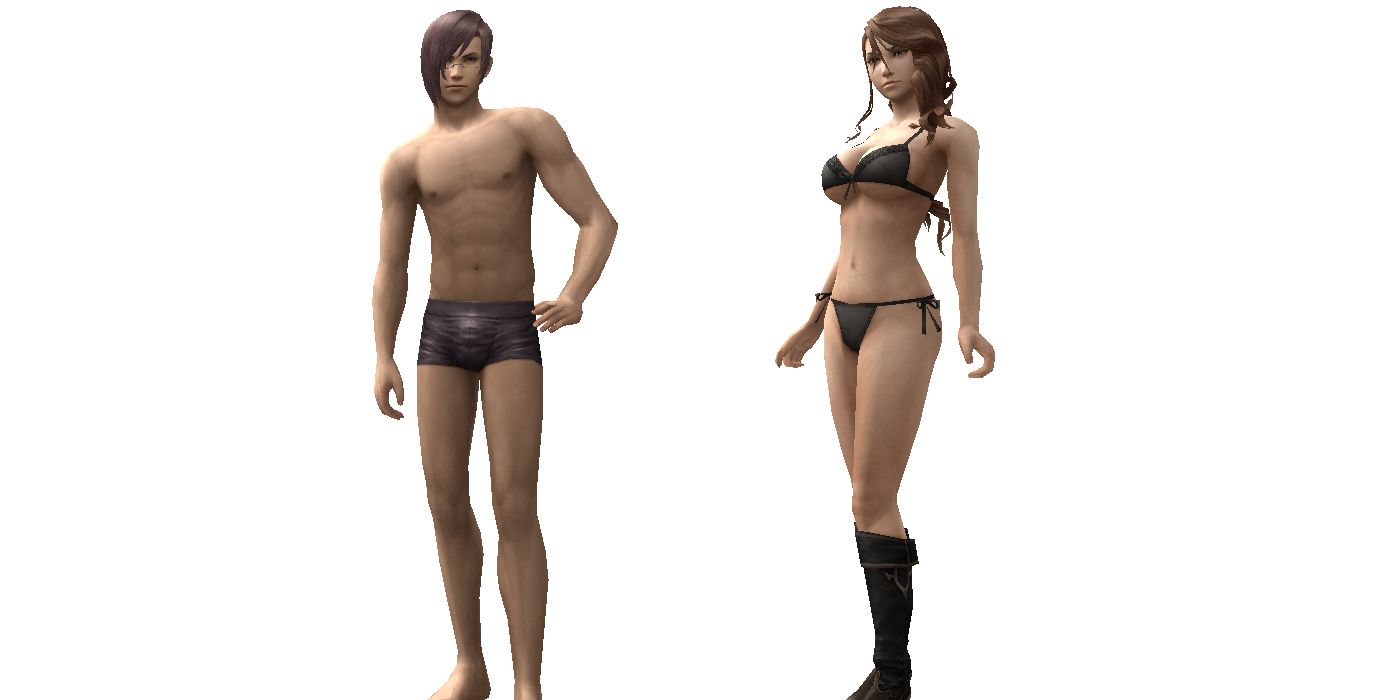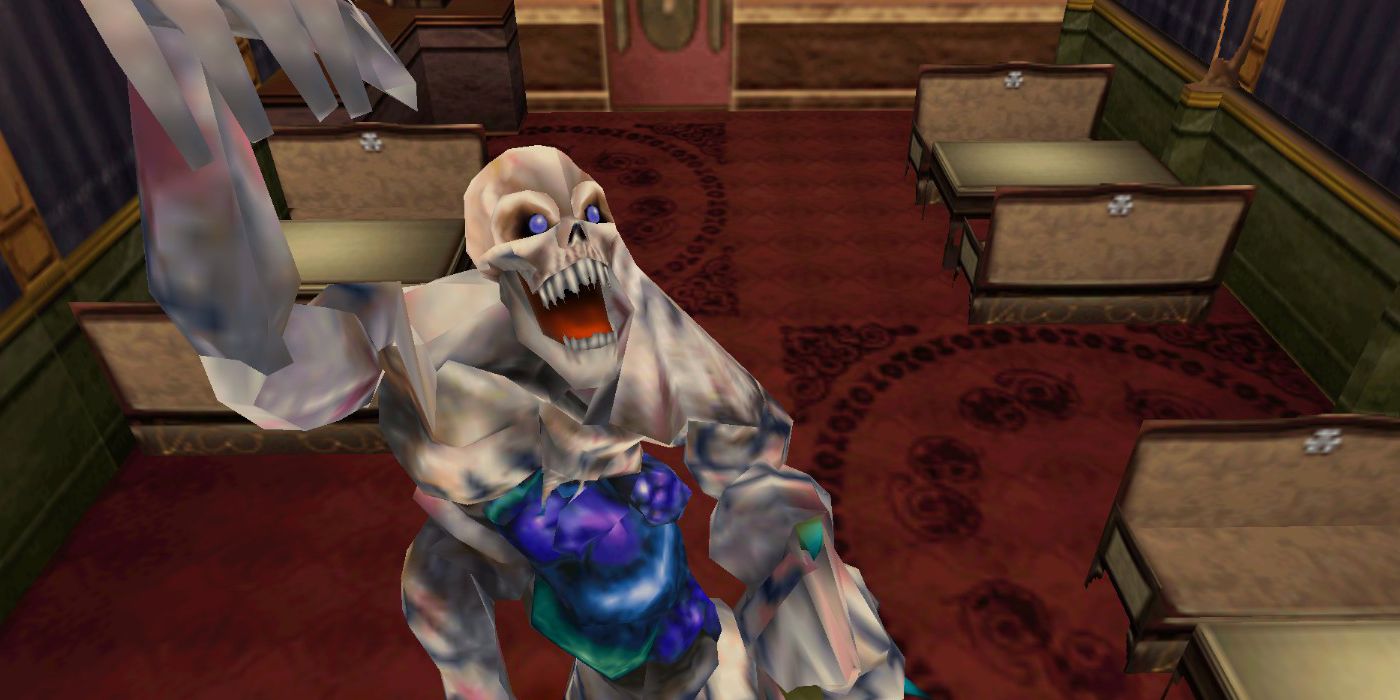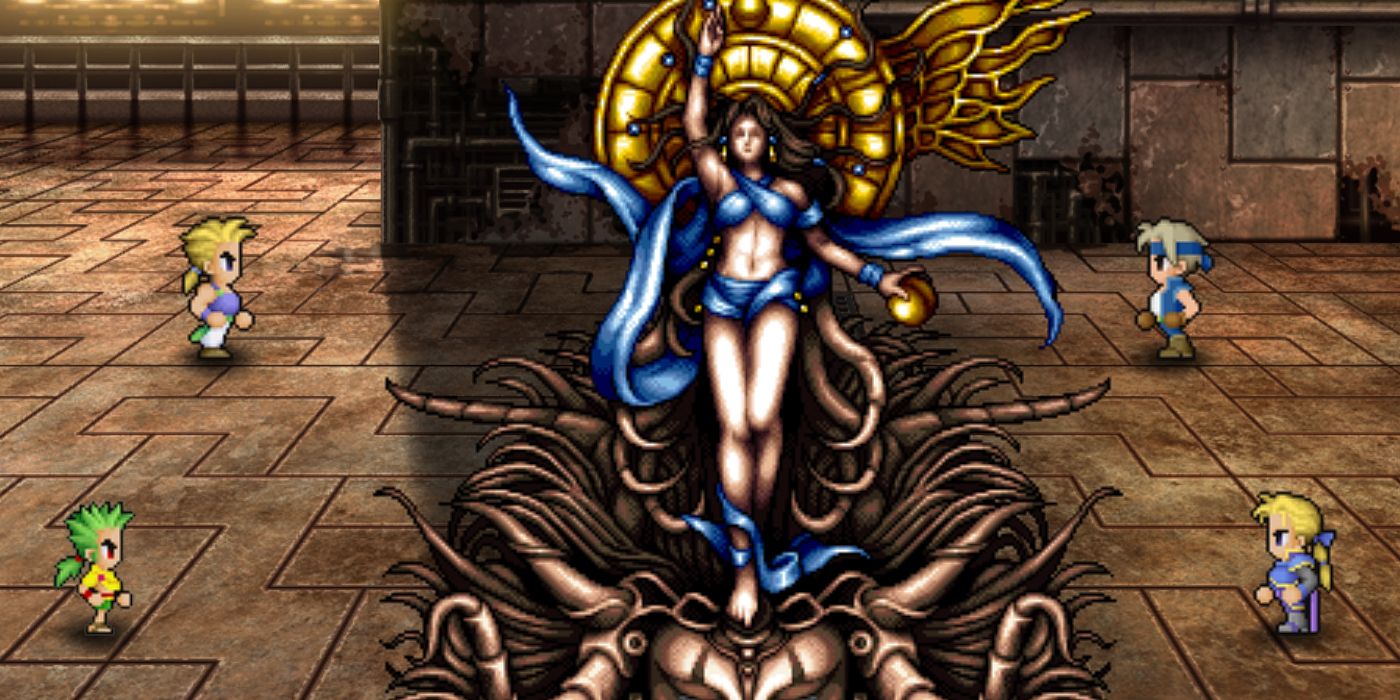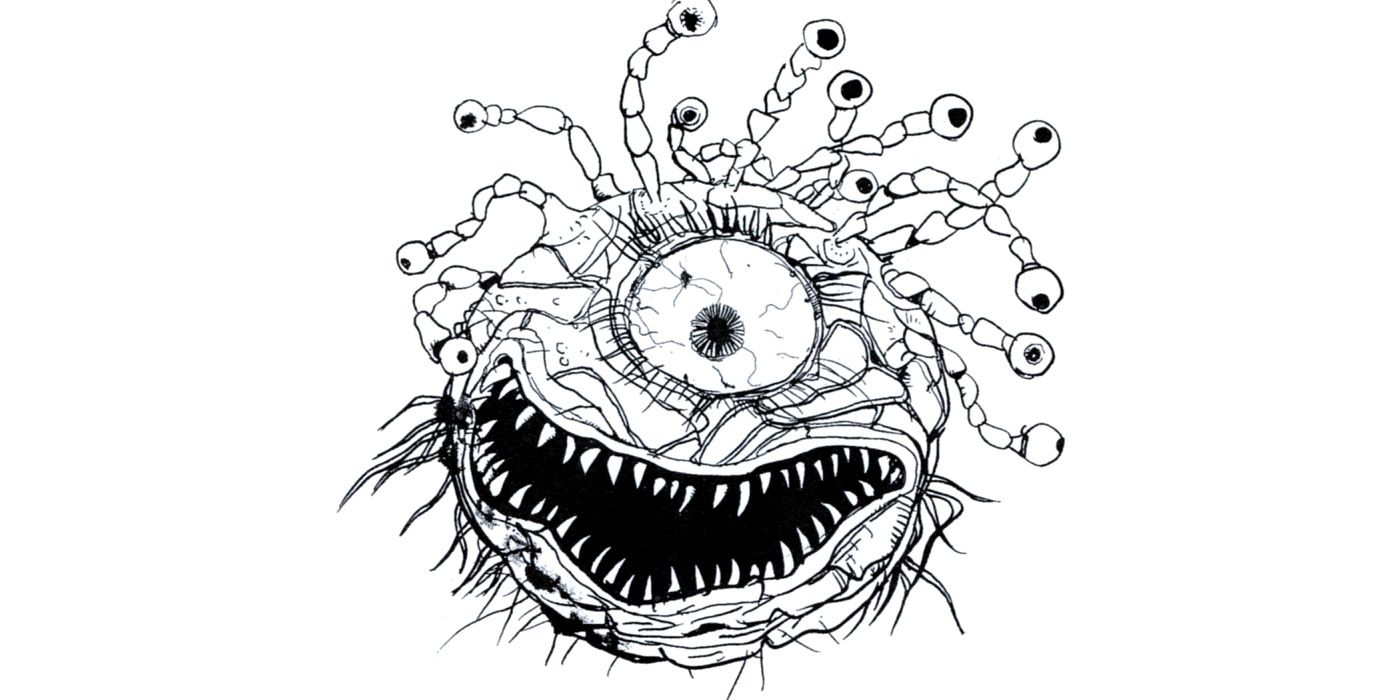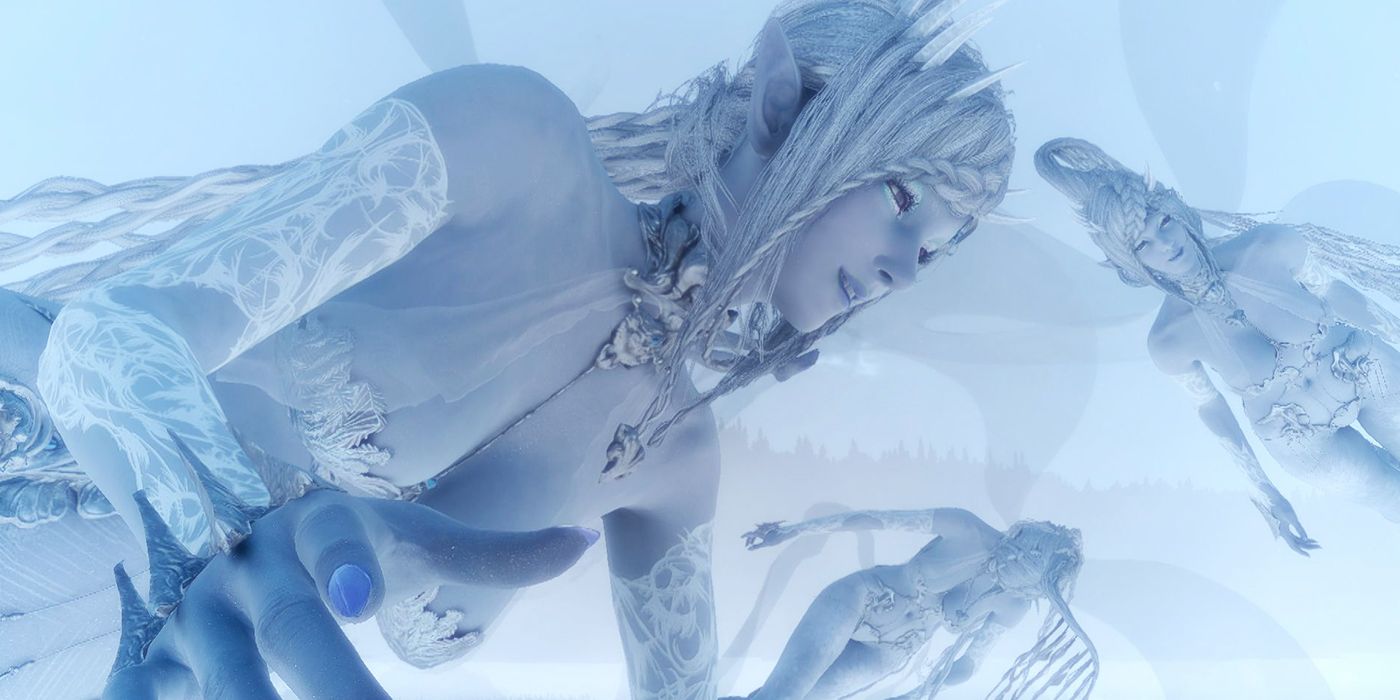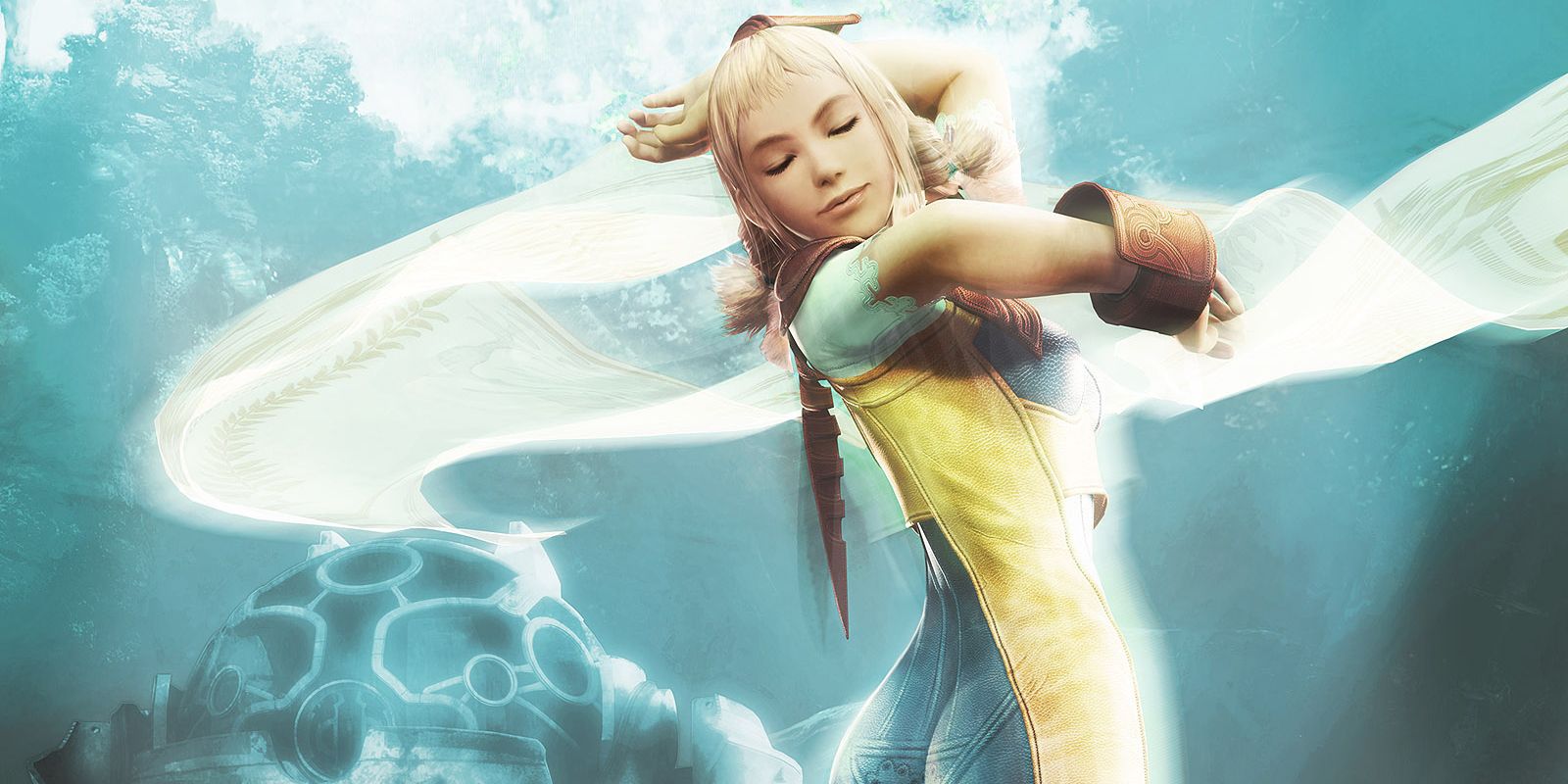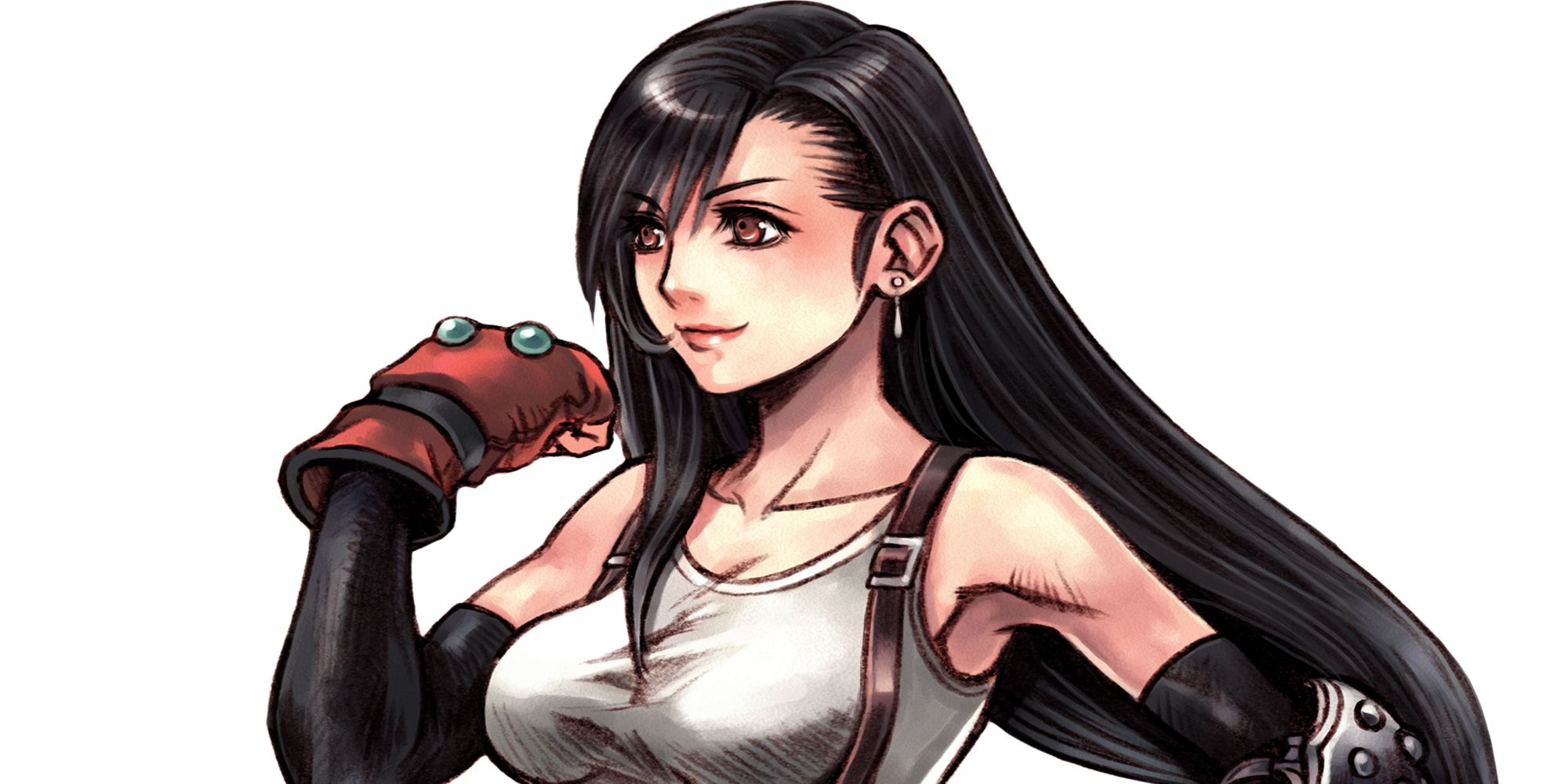The Final Fantasy series has undergone censorship since the games first left Japan. Final Fantasy for the Nintendo Entertainment System needed to have crosses removed and spell names altered in order to make them less offensive. These were the first in a long series of changes that were imposed upon the series by Nintendo, which was one of the reasons that Squaresoft jumped ship to the PlayStation. While Sony offered more freedom for the games, they were still censored from time to time. Even the latest games in the Final Fantasy series needed to be changed in order to meet industry standards, which has led to the games being censored in Japan.
We are here today to look into the parts of the Final Fantasy series that made the ESRB nervous. From the religious iconography, which needed to be covered during Zack Fair's adventures, to the medieval swear words, which Tifa Lockhart used to yell at other women.
Here are the 15 Final Fantasy Games That Needed To Be Censored!
15. The Virgin Minerva
In Final Fantasy VII, it is revealed that all life returns to the planet when it dies. There is no afterlife awaiting the souls of humans and animals. Instead, all beings are reborn into an endless cycle of reincarnation. There are some who were able to cheat death and maintain their consciousness in the Lifestream (such as Aerith and Sephiroth), but most spirits simply return to the Earth.
Final Fantasy VII: Crisis Core established that there is some sort of higher power out there. Her name is Minerva and she is a being of almost god-like power who exists within the Lifestream. She restored Genesis Rhapsodos to life after he died, because he is so important to the franchise that he cannot be allowed to remain dead. However, Aerith didn't deserve a resurrection, as she doesn't look like a famous Japanese rock star.
It is possible to find statues of Minerva in the Banora Underground. These were changed for the international release of the game, as the statues originally resembled the Virgin Mary. The updated version of the statues now looked more like Joan of Arc.
14. The Dress Of The Dancing Girl
The need for a video games rating system first appeared in the '90s and was created due to the increasing amount of violence that was being shown on screen. Games like Mortal Kombat and Doom helped create the ESRB, as parents across America grew concerned about all of the blood that was appearing in titles meant for children. Sexual content in games was never as big an issue and it certainly never caused the same level of controversy that violence did.
The 16-bit consoles of the '90s lacked the ability to depict realistic nudity. Despite this, the American version of Final Fantasy IV (known as Final Fantasy II) toned down the dancing girls that appeared in some of the towns. In the Japanese version of the game, the girls would remove their red dress, revealing a white bikini underneath. The American version of the game changed the programming, so that the dancers never took off the dress. An entire generation of gamers was denied three pixels worth of bare skin.
13. Peeling Off The Onion Knight
The Final Fantasy series has needed to censor the bare skin of numerous female characters over the years, as we will see later on the list, but it isn't just women who have had clothes added onto their bodies during localization. As fans of the Dissidia Final Fantasy series can attest, the folks at Square Enix are just as eager to strip down the guys as they are the girls.
When Mobius Final Fantasy was first in development, the main character's outfit was shown to be very skimpy. The protagonist of the game is an Onion Knight, named Wol, whose default outfit originally seemed to have had the sides cut off, revealing his muscular physique. When footage of the game next appeared, Wol's outfit had been extended. The producers of the game had responded to online feedback about the design and the consensus among fans was that it was "too sexy." They decided to extend the outfit in order to cover his skin.
12. Teenage Mutant Ninja Selphie
The United Kingdom used to have strict censorship laws concerning the portrayal of ninja weapons in the media. Movies like Enter the Dragon had the famous nunchaku scene removed entirely. The most well-known victim of this law was the Teenage Mutant Ninja Turtles animated series, as it was called Teenage Mutant Hero Turtles in England (with its own specially recorded version of the title sequence). Most of the episodes that had scenes of Michelangelo using his nunchaku were removed completely. These strict censorship rules have long since been written out of English law and are no longer in effect.
In Final Fantasy VIII, Selphie uses a massive pair of nunchaku in combat. In the European version of the game, these were referred to as Shinobou instead. A similar change also happened in the original version of Soul Blade for the PlayStation, as Li Long's nunchaku were changed into a three-section staff for the European version of the game.
11. Cid The Alcoholic
Final Fantasy Tactics Advance has one of the most peculiar tales of morality in the series. The cast of the game is a group of children who are sent to a magical world where all of their problems no longer exist. In the real world, Marche is mostly ignored by his parents, as his disabled brother requires a lot of care. When he is sent to the world of Ivalice, he becomes the leader of a powerful guild, where he ends up the center of attention. His brother is also sent to Ivalice, where he is no longer ill and can now walk.
Marche's friend, Mewt, has it the worst back in the real world. His mother is dead and his father, Cid, is a deadbeat. In Ivalice, his mother is alive once more and Cid is the respected leader of the Judges. The American version of the game totally changed the original encounter with Cid. In the Japanese version of the game, Cid has become an alcoholic and he is encountered in a drunken state on the streets. This was changed to him being insulted by his boss at the cab company, unable to stand up for himself.
10. Covering Up The Cast
The second most popular Final Fantasy game in Japan is the fourth one. Final Fantasy IV is mainly loved for historical reasons, as it represents a huge technical leap forward for the series. This is why IV has received so many different ports and remakes over the years, while games like V and VI are overlooked.
Final Fantasy IV's popularity is also why it received a direct sequel. Final Fantasy IV: The After Years is set seventeen years after the original game and follows a large cast of playable characters, as they attempt to stop the destruction of their world.
The official artwork for Final Fantasy IV: The After Years was changed for the international release of the game. Rydia had her outfit totally redesigned, in order to show less skin. Porom's outfit was altered to hide the curves of her body, which was visible in the initial version. Ursula's outfit had a pair of shorts added to it, in order to show off less of her thighs.
9. The Scythe & Ball
Final Fantasy IV might be the most censored game in the series. The Final Fantasy II version that was released in America had numerous character abilities removed, in order to simplify the game. As previously mentioned, the bikini outfits of the dancing girls were erased from the game. Any overt references to death or the sexual relationship between Cecil and Rosa were toned down, as well as any religious icons being changed.
One of the most unusual alterations made to Final Fantasy II involves the kidnapping of Rosa. She is held within the Tower of Zot and it is up to the party to rescue her. In the Japanese version of the game, Rosa is being held beneath a giant scythe that threatens to drop and decapitate her if she is freed from her bonds. This was changed into a giant metal ball for the international version of the game, that would fall and crush her if she tried to escape. Nintendo of America felt that being crushed to death was more appealing than being cut in the half.
8. Banana Drugs
Square Enix owns numerous video game franchises. The two most well-known are Final Fantasy and Dragon Quest, which both continue to receive regular new instalments and spinoffs. Square Enix have also created franchises that have been abandoned, like the Mana and Parasite Eve series, which drifted off after a few games.
One Square Enix property that has drifted in and out of relevance is the Saga series, which has had numerous revivals over the years. The Game Boy titles in the series actually saw a release in the West, though they were renamed Final Fantasy Legend in order to cash in on a more recognizable name.
Final Fantasy Legend II is one of the few games in the series to deal with the topic of drugs, as the player visits a town that is hiding an opium smuggling operation. This was changed to a banana smuggling operation, due to Nintendo of America's strict rules on censorship. Bananas were likely chosen in order to be as ridiculous as possible.
7. Swimsuits Type Zero
It seemed for a while that Final Fantasy Type-0 was going to be the most high-profile game in the series to have never left Japan. Final Fantasy Type-0 was released for the PSP in 2011. It was originally going to be part of a shared series with Final Fantasy XIII, though these plans were scrapped. Despite the rave reviews and incredible looking graphics, there were no announced plans to release Final Fantasy Type-0 in the West. Fans believe this is due to concerns about the rampant piracy on the PSP. The game finally received an HD update that was released worldwide on the PlayStation 4 and Xbox One in 2015.
One of the most unusual changes to Final Fantasy Type-0 HD was the removal of some of the costumes. It was possible to unlock swimsuit outfits for Kazusa and Emina by completing quests, which could be viewed in the game's compendium. These costumes were removed from the game, despite the fact that it had a Mature rating.
6. Blue Guts
Final Fantasy VII had no problem with showing blood; for example when Sephiroth bleeds in the cutscene following his final battle with Cloud in the Lifestream. It seemed that Final Fantasy VIII was going in the same direction, as Squall bleeds quite a bit during the opening cutscene of the game. However, despite this intro, Final Fantasy VIII would go on to censor blood that appears later in the game.
The party is tasked with kidnapping the Galbadian President during an early mission in the game. It turns out that the president is actually a monster in disguise, and is used to kill any terrorists that would try and capture him. The fake president is an undead monster, called Gerogero. In the original Japanese version of the game, we can see the bloody interior of Gerogero's body. The international version changed his insides to blue, in order to make it look less like a torn apart body.
5. The Naked World Of Final Fantasy VI
The first six Final Fantasy games all debuted on Nintendo consoles. Only three of these made it overseas and they were all censored to some degree. These games might have had much darker stories if it weren't for Nintendo's strict content guidelines. This is one of the reasons why Squaresoft jumped ship to Sony. Would Final Fantasy VII have been allowed to kill off Aerith or feature a cross-dressing Cloud if it appeared on the Nintendo 64?
Final Fantasy VI needed to have a lot of graphics changed for its international release. These were mostly related to female character sprites, as enemies such as Chadarnook and the Goddess needed to have more clothes added on to their bodies. Kefka also had a loincloth added to the version of his body that appears on the tower of the gods. There were also a few enemies that were smoking cigarettes, which also had to be altered.
4. Eye & The Beholder
The first Final Fantasy game was heavily inspired by Dungeons & Dragons. Everything from the character classes to having to memorize spells beforehand is all part of D&D. As the series went on, the Final Fantasy games started to forge their own identity. The early Dungeons & Dragons inspiration is now almost entirely removed from the series.
When Final Fantasy was being prepared for its international release, there were concerns surrounding one of the enemies in the game. One of the bosses in the game is called the Evil Eye. In the Japanese version of the game, it greatly resembled the Dungeons & Dragons monster known as the Beholder. While the other monsters in the game are based on public domain designs (Goblins, Dragons, etc), the Beholder is a trademarked creature. The Evil Eye boss had its appearance changed to make it look like a giant eyeball monster, in order to prevent a possible lawsuit from TSR.
3. Shiva Must Be Cold
The summoned monsters of the Final Fantasy universe hold the distinction of having the most appearances of any characters in the series. Beings like Ifrit and Ramuh have appeared in various different forms across the games. This has allowed the developers to play with the established roles that we associated with these characters, like turning Ifrit into a villain in Final Fantasy XV.
Shiva is one of the most common recurring summoned monsters in the Final Fantasy series. She is often depicted as a beautiful woman who usually doesn't wear a lot of clothing. This has made her a popular character with the fans, though it recently caused issues for Final Fantasy XV.
The Chinese version of Final Fantasy XV censored Shiva's appearance in the game. In the other versions of Final Fantasy XV, Shiva wears very little clothing. This was changed for the Chinese audience, with her skimpy outfit being replaced by a form-fitting bodysuit instead.
2. Penelo's Kidnapping
This is one of the rare examples of a Final Fantasy game which was only censored in Japan.
In Final Fantasy XII, Penelo is kidnapped by the headhunter gang, who believe that she has some sort of connection to Balthier. She is taken to the Lhusu Mines and used as bait. It is up to the party to try and rescue her. These cutscenes were relatively harmless. They mainly showed Penelo locked up and questioned by her captors. Penelo's captors do threaten to pull her tongue out at one point, but she is basically unharmed throughout her imprisonment.
The cutscenes involved with Penelo's kidnapping were removed from the Japanese version of the game, as the developers were worried that these scenes would increase the age rating. This is due to the fact that there were a string of high-profile kidnappings & murders in Japan around the time of the game's release. The scenes were reinstated for the international versions of the game.
1. Tifa Lockheart's Censored Medieval Insults
Final Fantasy VII was a huge hit for both Squaresoft and Sony. This led to Squaresoft commissioning a port of the game for Microsoft Windows, in order to increase the game's potential audience. The PC port of the game was a notorious disaster, which barely ran on the systems of the day. Even now, the game needs a ton of fan-made mods to run. While some of the bugs and typos from the PlayStation version were fixed, they were replaced with terrible audio quality and downscaled FMVs.
One of the most unusual changes made to the PC port of Final Fantasy VII was the censoring of swear words. All of the profanity of the original game was replaced with a bunch of symbols. This also consisted of a term that was only ever considered to be a profanity during the Dark Ages. When Tifa has her infamous slap fight with Scarlet in Junon, she originally called her a "wench." This was one of the words that was censored in the PC port. An insult that wouldn't seem out of place in Westeros was thought to be too much for the poor innocent brains of PC owners across the world.
---
Do you think these Final Fantasy edits were necessary? Let us know in the comments!

